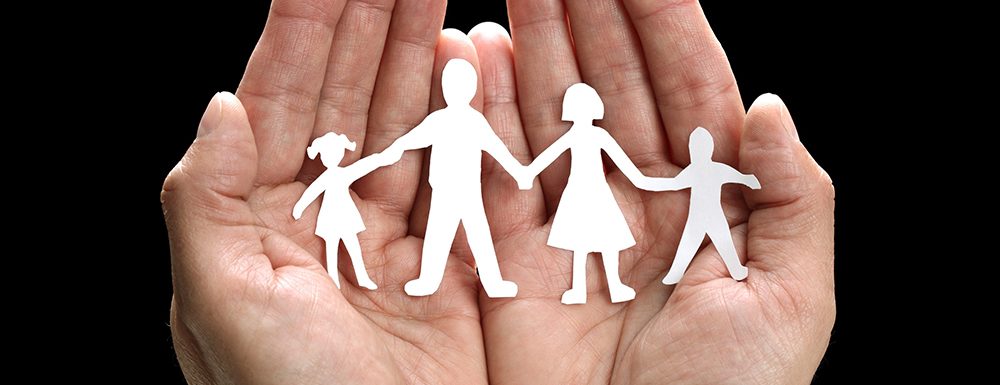
In part two of her four-part series on human security and human trafficking, Youth Ambassador Konstantia Tsiaousi focuses on the relationship between security and child labour in the UK. Read part one here.
Children are particularly vulnerable to trafficking and exploitation. But why does child labour exist? Children tend to be more exposed, cheaper to hire and are less likely to demand higher wages or better working conditions. It is not because they have no voice; on the contrary. Children do have a voice, although it is sometimes denied to them. This happens because they are often more trusting than adults and can often be more easily controlled by being kept in fear. Child labour is not labour per se. It is work that is done by children. Not all work done by children should be classified as child labour though; work that does not affect their health or personal development, is generally regarded as being something positive. Regarded by the International Labour Organisation as one of the worst types of modern slavery, the term “child labour” is often defined as work that deprives children of their childhood, their potential and their dignity, and that is harmful to their physical and mental development. Almost a quarter of a million children, or 16 out of every 100 children worldwide, are engaged in exploitative child labour. In 2016 alone, the National Referral Mechanism in the UK received 3,805 referrals of potential victims of human trafficking and children made up 34 per cent of those referrals which means up to 1,278 cases. Of those, the number of reported cases where children were involved in labour exploitation, as opposed to domestic servitude and sexual exploitation, reached 468. We can assume by the hidden nature of the crime, that the actual number is much higher.
Measuring the extent of this heinous crime is a rather difficult task; mostly because many cases remain unreported. Even when reported human trafficking cases are in the spotlight, responding to this crime can sometimes, if not always, be challenging. In the UK for example, reports have shown that the system for dealing with modern slavery does not secure a safe pathway for the recovery of the victim. In fact, due to the complexity of the crime and challenges that come with identifying and supporting victims, insecurity can be increased. In some cases, a child’s access to NRM services, justice and legal protection as a victim of trafficking can be challenging as (s)he firstly needs to be identified as a victim by the the UK’s two Competent Authorities as in either the NCA’s Modern Slavery Human Trafficking Unit (MSHTU) or the Home Office Visas and Immigration (UKVI). This in itself can be a challenge because decision making across the two NRM Competent Authorities (CA) can sometimes be inconsistent. The different way in which victims are being referred to the NRM influences the outcome of the decision; for example, there is often a lack of supporting information or the child’s individual circumstances, for example, trauma and inability to express his/hers feelings clearly make it even more difficult for the CA to decide correctly. And even after a child is determined to be a victim of trafficking, the lack of security provided within the system and inadequate means for rehabilitation means there is always the risk of being re-trafficked. This leaves child victims in a situation of prolonged insecurity, putting them at risk of increased exploitation. In its most extreme forms, child labour involves children being enslaved, separated from their families, exposed to serious hazards and illnesses. What is missing in order to provide real security for these children is meaningful protection of human dignity, livelihood, health and standard of living. But how can this be done?
The Human Security approach I outlined in Part 1 of this series provides a paradigm in which to develop advanced context-specific responses that aim to lessen the impact of trafficking on the victims through prevention and empowerment. I set out here what this might mean for child victims of trafficking in one specific context – where they have been found to be participating in forced criminal activity.
In 2015, the Modern Slavery Act was enacted in England, Wales, Northern Ireland and Scotland, which upholds the international principle of non-punishment and attempts to protect victims from secondary victimisation. The non-punishment principle recognises that victims of trafficking might be forced into criminal activity, such as shoplifting and working on cannabis farms, and it reminds first responders to treat them first and foremost as victims. Despite this, victims are often perceived and treated as criminals. Tung’s story serves as an example here, with the teenager being one of Britain’s cannabis slaves for several years. Like many other trafficked child cannabis gardeners, when the flat was raided, he was sent to prison.
This problem still remains due to ineffective implementation of the law and a lack of multi-sectoral work. In fact, the operation of the non-punishment principle has recently been under scrutiny because of these shortcomings. So how do we address this? First and foremost, it is important to listen to the victims involved in the crime, even more so when they are children. White police training programmes on how to spot the signs of human trafficking and prevent it in the UK are currently seen as the best practice, other sectors must also be involved. Engaging the public and private sectors as well as the volunteer and educational sectors is necessary. All the different stakeholders that come across and deal with children will need to be able to build child protection capacity that can contribute to the well-being of child victims of labour exploitation.
The human security approach could be well applied here. It could provide a framework in which training and awareness-raising on the protections from prosecution available for trafficked children, which we hope in turn reduce criminalisation of victims. Such activities could be introduced with the police, prosecutors, judges, legal representatives and relevant practitioners. A collaboration of prosecuting agencies and governments could also be useful in order to impose mechanisms to monitor the implementation of the non-punishment principle across the UK.
Exploiting children for labor has always been an international concern. It is damaging and harmful in many ways. Millions of girls and boys are missing out on their childhood and their future. It is our responsibility, both citizens’ and state’s responsibility to come together to put an end to this unspeakable crime. Child labour elimination comes down to collaboration; it comes down to us working together to meaningfully protect our young people and prevent this crime.


